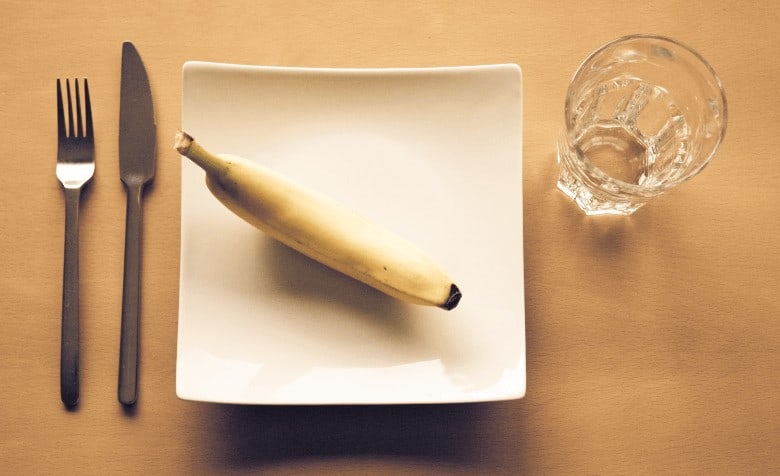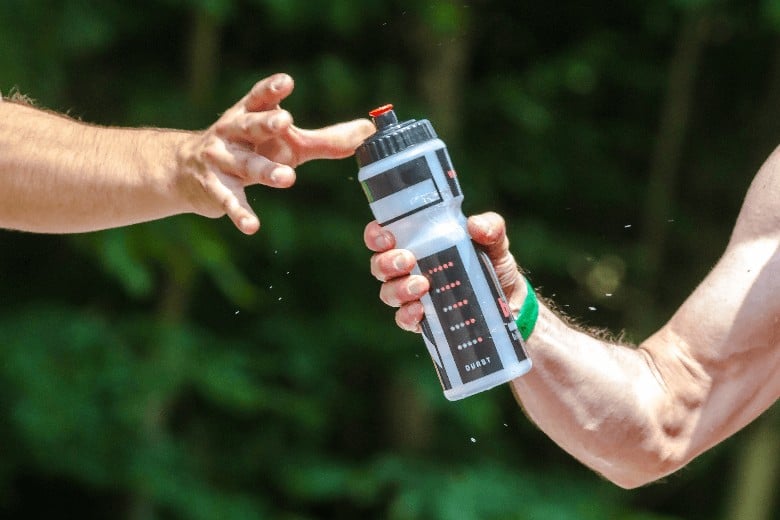Are you tired of restrictive diets that leave you feeling unsatisfied and still far from your fitness goals? What if we told you there’s a way to eat what you want and still achieve the cycling performance you desire? It’s called flexible dieting, also known as IIFYM (If It Fits Your Macros).
In this article, we’ll dive into the nutrition basics you need to know to improve your cycling performance and transform your body. You’ll learn:
- What flexible dieting is and how it can help you reach your cycling and weight goals while still eating normally
- How to calculate your macronutrient ratios and the exact amount of carbs, protein, and fat you need to consume daily to drop body fat
- The best apps, calculators, and tools to help you start tracking your macros and achieve your fitness dreams
What Is IIFYM?
IIFYM (If It Fits Your Macros), also known as flexible dieting. It is a nutrition system that brings healthy eating back to basic macronutrients – carbs, protein, and fat.
IIFYM revolves around tracking the three macronutrients in all foods. You can then adjust your daily intake and ratios to reach your cycling and body goals.
Flexible dieting is a system of eating based on giving your body what it needs to perform and function, whether your goal is to lose fat or gain lean muscle. Each day, you eat a specific target of macronutrients. Think of it as a daily food budget. Macronutrients add up to a certain number of calories.
Stick with me here… I’ll explain the simple maths in the next section.

What Are Macros?
“Macros” is short for macronutrients – Carbohydrates (“Carbs”), protein and fats. If you breakdown food, it is made up of a split of these macronutrients and your body processes each in a different way. Each macro is a substrate that is broken down in your body and used for different processes. Generally, macros are measured in grams (g) with an energy unit measurement conversion known as a calorie (kcal). Check out the packaging on your favourite cereal box and you’ll see what I mean!
This is the conversion factor:
- 1g of carbohydrates (carbs) = 4 kcal
- 1g of protein = 4 kcal
- 1g of fat = 9 kcal
You can then bring it all together using this equation:
(Carbohydrates (g) x 4) + (Protein (g) x 4) + (Fats (g) x 9) = Total Calories (kcal)
Micronutrients
As I mentioned earlier, you have a daily budget of macros, and as long as you fall within this budget, you can eat whatever you want! However, note that if you avoid fresh unprocessed foods like the plague, you are risking creating deficiencies and numerous health problems. So don’t treat this as a free for all cake diet. 🙂
Healthy foods contain various micronutrients (vitamins and minerals) that are required for optimal body function and performance. As with everything in life, try the 80/20 rule – 80% unprocessed, whole foods, and 20% treats. This will allow you to enjoy yourself, even when you are on a diet.
Cycling Nutrition Food Sources
If you’re looking to fuel your body for optimal performance on your rides, it’s important to know what to eat before, during, and after.
Before or after a ride, you should try to eat easy-to-digest foods that can help maximize nutrient absorption and replenish your body. This isn’t a hard or fast rule, so just eat what makes your stomach feel comfortable pre or post-ride.
Here are some examples of whole food sources. This is by no means a complete and exhaustive list!
- Pre-ride nutrition – go for carbs like fruit and oats, and protein-rich foods like eggs and yogurt
- Intra-ride nutrition – aim for easily digestible carbs like gels or sports drinks. Don’t forget to hydrate throughout!
- Post-ride – replenish your body with protein and carbs, like a sandwich with lean protein and a side of fruit
It matters much less WHAT you eat than the macro budget you take in. It is important to get as close to your numbers as possible. Don’t fret about hitting your numbers exactly, but try to be consistent and hit within about 5g of each value.

Finding Your Ideal Macronutrient Ratio For Your Goals
First things first – you need to set a realistic weight goal.
Your goal will determine whether or not you need to increase or decrease your base daily caloric intake. This will then help you to determine your macronutrient split.
Step 1 – Determining your daily intake
The first step is to determine your current caloric intake. There are two ways of doing this.
- Method one is the scientific approach, which involves finding your basal metabolic rate (BMR) and your total daily energy expenditure (TDEE)
- Alternatively, you can track and log your eating habits for a week or two and determine your daily average calorie intake from that
To find your BMR first plug in your current weight, height, and age into this calculator. Next, you determine your TDEE by taking the calculated BMR and applying the relevant activity type (people generally overestimate their level of activity, so err on the lower side if you’re not sure):
- Sedentary = BMR X 1.1-1.2 (little or no exercise, desk job)
- Lightly active = BMR X 1.2-1.4 (light exercise/sports 1-3 days/wk)
- Mod. active = BMR X 1.4-1.6 (moderate exercise/sports 3-5 days/wk)
- Very active = BMR X 1.6-1.7 (intense exercise/sports 6-7 days/wk)
- Extr. active = BMR X 1.7-1.9 (intense daily exercise/sports & physical job)
This total is then your estimated daily caloric intake. If you think this number is coming out a bit low, track your food for a week or so as I suggested and start with that number. I have listed a few food tracker apps listed below.
Step 2 – Setting your daily caloric target
Now that you have your current daily caloric intake, adjust your goal caloric intake based on your goals. From here, the numbers are a lot easier to work with. If you want to lose weight, you go into a caloric deficit; if you want to gain weight/muscle, you go into a caloric surplus.
General guidelines on how much to add or subtract are here:
Losing weight: decrease the daily caloric intake by 5%. This should result in a healthy 0.5-1lb loss in body weight per week. If you find that you are losing more than that after a couple of weeks, add back 100kcal (made up of either carbs, fats or a combination of both).
Gaining weight/muscle: increase the daily caloric intake by 5%. Aim for about a pound a month of weight gain. This should allow for muscle while limiting gains in body fat. Again, if you’re not gaining, add in a bit more calories.
To allow for additional flexibility around your ride days, the average deficit or surplus throughout a week is more important than day-to-day. For example, if you go over your macro budget for a day, “borrow” / subtract a small portion of your macros over the next 3-4 days to ensure that you are still hitting your weekly deficit target.
Step 3 – Determining your macronutrient split
As a general guideline, you can start with the following split:
- Protein ratio is set at 0.5 – 0.75 grams per pound of bodyweight
- Protein is often thought of as gym junkie food and not relevant to cyclists. However, getting adequate protein into your diet will support your recovery, immune function and overall health
- Not only does protein help us to recover from our training, it preserves lean tissue when trying to lose weight. It also helps us grow more muscle when bulking up, and has the highest effect on satiety of all the macronutrients
- If your main mode of exercise is cycling, then you require a moderate amount of dietary protein
- Fats are set at 20-35% of daily energy expenditure
- Consumption of dietary fat is important for regular hormonal function in both sexes. If you drop your fat intake too low for a long period of time, the most obvious change you will notice is a decrease in sex drive. Fats should never be eliminated from a diet
- Your gender and starting body type can make a difference in how much or little fat you can consume in a day. The amount of fat that you naturally store can have an effect on the way that you mobilize, or utilize the stores of fat that you have
- Carbohydrate grams come from the remainder of your calorie intake
- Carbs is the body’s primary energy source when it comes to endurance sports like cycling
- Carbohydrates play a major role on the human body and have several positive impacts on hormones. It helps us fuel our workouts and replace muscle glycogen (the primary and preferred fuel source of our muscles)
Protein is the most important macronutrient when dieting or building up muscles for those hill sprints. So when possible, stick to your allotted protein target. With your fats and carbohydrates, there is some wiggle room with the ratio.
For example, if you can’t live without your smashed avocado, allot more fats into your diet (i.e go up to 30-35% of your calorie intake).
On the flip side, if you love your bread, rice, and pasta, lower your fats to allow for more carbohydrates. What’s most important is that you are still in an overall calorie deficit/surplus.
Paired with a proper training routine and adhering to your macros, this system will support steady fat loss/muscle gain for at least 4-6 weeks before any adjustments are required.
Start by making minimal adjustments, i.e 100kcal of either fats or carbs.

Tracking Your Food With Apps
So now that you understand the basics of nutrition, it’s time to put in the work! If you don’t already own a digital food scale, it’s time to invest in one. This will allow you to measure out your portion sizes and keep on top of your daily macros.
Two of the biggest Apps out there are MyFitnessPal and MyMacros+. Both have a large database of food items that other users have already input. Just compare the packaging to the version you have selected!
Over time, you’ll find that you more or less stick to the same foods and menus, so logging won’t be as much of a chore.
Additionally, you’ll also learn how to start eyeballing portion sizes (not recommended for newbies!), so you won’t need to weigh out all your foods. Ultimately, this is the end goal that will allow you to eat within your means and maintain the body type you always dreamed of!
Remember, everybody’s basal metabolism and body functions are different. It may take a few weeks of tweaking your calories and ratios to find what works optimally for your specific body.
If you’re running out of energy halfway through a long ride, add back a bit of carbs to the diet. Just remember to track your data points (i.e. calories and weight), so you know how to make your adjustments.
Cycling Nutrition – Fueling Your Rides
If you are eating at regular intervals throughout the day, a moderate-effort ride of 60-90 minutes doesn’t really need additional fuel support. The carbohydrates stored in your muscles should be more than sufficient to provide you with the energy needed during this session.
If you’re planning for a longer ride, you can consider adding some carbohydrates or caffeine to your pre-ride meal. Alternatively, consider carrying an energy gel like the GU Energy Gel for a mid-ride boost. You can find some additional information on what type of carbs to eat pre-exercise here at Triathlon USA.
General guidelines for recreational endurance athletes are 30g of carbs per hour for low to moderate-intensity training. You can increase it up to 60g per hour for high-intensity sessions. You can find a good article on the use of carbs during endurance exercise here.
Related article – Nutrition Tips For A Gran Fondo

Cycling Nutrition Summary
The point of flexible dieting is to keep enjoying the foods you eat and to take away the stress of fad diets. Give your body what it needs and wants and it’ll perform well on the bike.
When it comes down to it, the most important thing is that you are willing to change your plans according to the situation and just go with the flow. Did you miss a meal? So be it, adjust your macros for the day. Did you eat an extra serving of birthday cake? Great, more energy for the next ride! Don’t make dieting any harder than it needs to be!
I hope that helps and gives you a starting guideline on how to implement a safe eating system into your lifestyle. Now that you’ve taken care of the inside – how about some skin care for cyclists! Or looking for a bit of extra oomph to your recovery? Check out the best stretches for cyclists to help recover faster.

